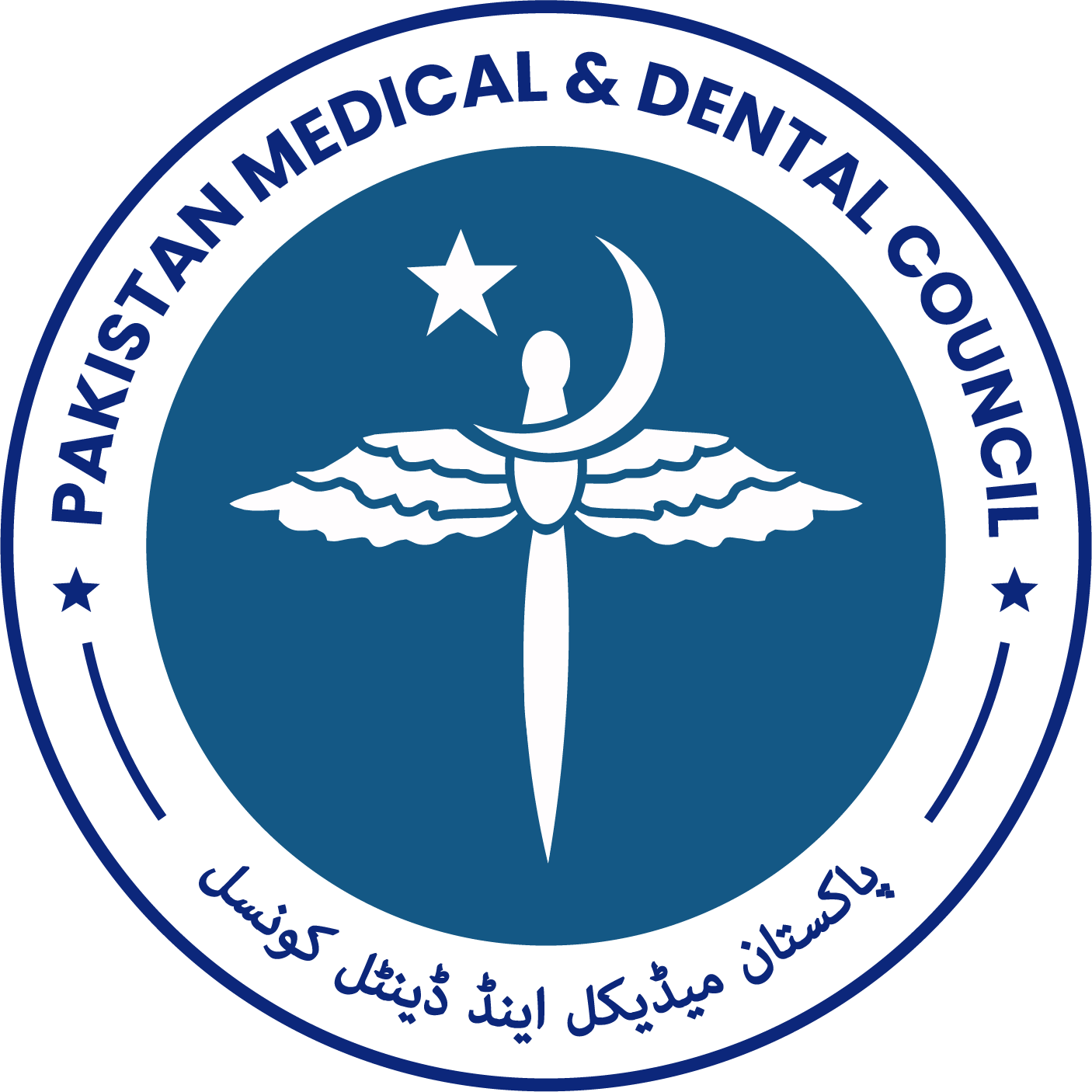Control of Type II Diabetes, Its Relationship with Obesity and Basal Metabolic Rate
DOI:
https://doi.org/10.53685/jshmdc.v1i1.32Keywords:
Diabetes Mellitus, Glycemic Control, Obesity, Basal Metabolic RateAbstract
Background: The prevalence of T2DM is around 7-10%. Control of diabetes and factors influencing it in third
world countries need to be clearly defined as most of the people have poor glycemic control.
Methods: A cross sectional study was conducted and purposive sampling was done to collect data for 5 months. A
total of 766 type 2 diabetic patients were enrolled who visited SiDER (Sakina Institute of Diabetes and Endocrine
Research Center) at Shalamar Hospital, Lahore, Pakistan. Only pre-diagnosed diabetic subjects with a random blood
glucose of more than 200mg/dl at two occasions and fasting blood glucose levels more than 126mg/dl were included
in the study. Variables like Body Mass Index (BMI), Glycated Hemoglobin (HbA1c) and Basal Metabolic Rate
(BMR) were recorded. The data was analyzed by SPSS 22 version.
Results: A total of 766 diabetics were recruited in the study out of which 40.3% were male and 59.7% were
females. The mean age was 48.72±10.43 years. Out of these 53.39% were obese, 32.64% were overweight and only
13.97% had a normal body mass index BMI). HbA1c levels in the sample population showed that only 13.05% had
very healthy control i.e. 7% or less. There was a positive co-relation between Body Mass Indexand glycemic
control. However there was no statistically significant relation between Basal Metabolic Rateand glycemic control.
Conclusion: People with high Body Mass Index were found to have suboptimal glycemic control. It was also
observed that higher percentage of diabetic patients fall in age group of 41-55 years. More powerful studies are
needed to establish a relation between glycated hemoglobin and Basal Metabolic Rate.
References
Whiting D, Guariguata L, Weil C, Shaw J. IDF Diabetes Atlas: Global estimates of the prevalence of diabetes for 2011 and 2030. Diabetes Research and Clinical Practice. 2011; 94(3): 311-321. DOI: https://doi.org/10.1016/j.diabres.2011.10.029
Tuomilehto J, Lindström J, Eriksson J, Valle T, Hämäläinen H, Ilanne-Parikka P et al. Prevention of Type 2 Diabetes Mellitus by Changes in Lifestyle among Subjects with Impaired Glucose Tolerance. New England Journal of Medicine. 2001; 344(18): 1343-1350. DOI: https://doi.org/10.1056/NEJM200105033441801
Wild S, Roglic G, Green A, Sicree R, King H. Global Prevalence of Diabetes: Estimates for the year 2000 and projections for 2030. Diabetes Care. 2004; 27(5):1047-1053. DOI: https://doi.org/10.2337/diacare.27.5.1047
Leahy J. The Effect of Metformin and Intensive Lifestyle Intervention on the Metabolic Syndrome: The Diabetes Prevention Program Randomized Trial. Yearbook of Endocrinology. 2006; 2006: 69- 72. 5. Porte D, Kahn S. Beta-cell dysfunction and failure in type 2 diabetes: potential mechanisms. Diabetes. 2001; 50(Supplement 1): S160-S163. DOI: https://doi.org/10.1016/S0084-3741(08)70290-7
Bloomgarden, MD ZT. New therapeutic approaches to non-insulin-dependent diabetes mellitus. Endocrine Practice. 1997;3(5): 307-312. DOI: https://doi.org/10.4158/EP.3.5.307
Leong K, Wilding J. Obesity and diabetes. Best Practice & Research Clinical Endocrinology & Metabolism. 1999; 13(2): 221-237. DOI: https://doi.org/10.1053/beem.1999.0017
Groop L, Bonadonna R, DelPrato S, Ratheiser K, Zyck K, Ferrannini E et al. Glucose and free fatty acid metabolism in non-insulin-dependent diabetes mellitus. Evidence for multiple sites of insulin resistance. Journal of Clinical Investigation. 1989; 84(1): 205-213. DOI: https://doi.org/10.1172/JCI114142
Alawad A, Merghani T, Ballal M. Resting metabolic rate in obese diabetic and obese nondiabetic subjects and its relation to glycaemic control. BMC Research Notes. 2013; 6(1): 382. DOI: https://doi.org/10.1186/1756-0500-6-382
BBC NEWS. US obesity rates 'rising for the first time since 2004' [Internet]. 2015. Available from: http://www.bbc.com/news/world-us-canada34802263
Martin K, Wallace P, Rust P, Garvey W. Estimation of Resting Energy Expenditure Considering Effects of Race and Diabetes Status. Diabetes Care. 2004; 27(6): 1405-1411. DOI: https://doi.org/10.2337/diacare.27.6.1405
Mahmood K, Aamir AH. Glycemic control status in patients with type-2 diabetes. Journal of the College of Physicians and Surgeons--Pakistan: JCPSP. 2005; 15(6): 323-325.
Effect of intensive diabetes treatment on albuminuria in type 1 diabetes: long-term follow-up of the Diabetes Control and Complications Trial and Epidemiology of Diabetes Interventions and Complications study. The Lancet Diabetes & Endocrinology. 2014; 2(10): 793-800. DOI: https://doi.org/10.1016/S2213-8587(14)70155-X
Weykamp C. HbA1c: A Review of Analytical and Clinical Aspects. Ann Lab Med. 2013;33(6):393 15.WHO EC. Appropriate body-mass index for Asian populations and its implications for policy and intervention strategies. Lancet. 2004;363(9403):157. DOI: https://doi.org/10.1016/S0140-6736(03)15268-3
Henry CJ, Rees DG. New predictive equations for the estimation of basal metabolic rate in tropical peoples. European journal of clinical nutrition. 1991; 45(4): 177-185.
Gropper S, Smith J, Groff J. Advanced nutrition and human metabolism. Australia: Wadsworth/Cengage Learning; 2009.
Vázquez LA, Rodríguez Á, Salvador J, Ascaso JF, Petto H, Reviriego J. Relationships between obesity, glycemic control, and cardiovascular risk factors: a pooled analysis of cross-sectional data from Spanish patients with type 2 diabetes in the preinsulin stage. BMC cardiovascular disorders. 2014;14(1):153. DOI: https://doi.org/10.1186/1471-2261-14-153
Chan JC, Malik V, Jia W, Kadowaki T, Yajnik CS, Yoon KH, Hu FB. Diabetes in Asia: epidemiology, risk factors, and pathophysiology. Jama. 2009; 301(20): 2129-40. DOI: https://doi.org/10.1001/jama.2009.726
Mäkimattila S, Nikkilä K, Yki-Järvinen H. Causes of weight gain during insulin therapy with and without metformin in patients with type II diabetes mellitus. Diabetologia. 1999; 42(4): 406-412. DOI: https://doi.org/10.1007/s001250051172
Hayes L, White M, Unwin N, Bhopal R, Fischbacher C, Harland J, et al. Patterns of physical activity and relationship with risk markers for cardiovascular disease and diabetes in Indian, Pakistani, Bangladeshi and European adults in a UK population. J Public Health Med. 2002; 24(3): 170-178. DOI: https://doi.org/10.1093/pubmed/24.3.170
Hu FB, Li TY, Colditz GA, Willett WC, Manson JE. Television watching and other sedentary behaviors in relation to risk of obesity and type 2 diabetes mellitus in women. Jama. 2003; 289(14): 1785-1791. DOI: https://doi.org/10.1001/jama.289.14.1785
Bitz C, Toubro S, Larsen T, Harder H, Rennie K, Jebb S et al. Increased 24-h Energy Expenditure in Type 2 Diabetes. Diabetes Care. 2004; 27(10): 2416-2421. DOI: https://doi.org/10.2337/diacare.27.10.2416
Lee TC, Glynn RJ, Peña JM, Paynter NP, Conen D, Ridker PM, Pradhan AD, Buring JE, Albert MA. Socioeconomic status and incident type 2 diabetes mellitus: data from the Women's Health Study. PLoS One. 2011; 6(12): e27670. DOI: https://doi.org/10.1371/journal.pone.0027670
Downloads
Published
How to Cite
Issue
Section
License
Copyright (c) 2019 Faiza Kamal, Rozina Arshad, Bilal Bin Younis, Rashid Ahmed, Zakia Noureen, Muhammad Ahmad

This work is licensed under a Creative Commons Attribution-NonCommercial 4.0 International License.
You are free to:
- Share — copy and redistribute the material in any medium or format
- Adapt — remix, transform, and build upon the material
- The licensor cannot revoke these freedoms as long as you follow the license terms.
Under the following terms:
-
Attribution — You must give appropriate credit, provide a link to the license, and indicate if changes were made. You may do so in any reasonable manner, but not in any way that suggests the licensor endorses you or your use.
-
Non Commercial — You may not use the material for commercial purposes.
-
No additional restrictions — You may not apply legal terms or technological measures that legally restrict others from doing anything the license permits.




















